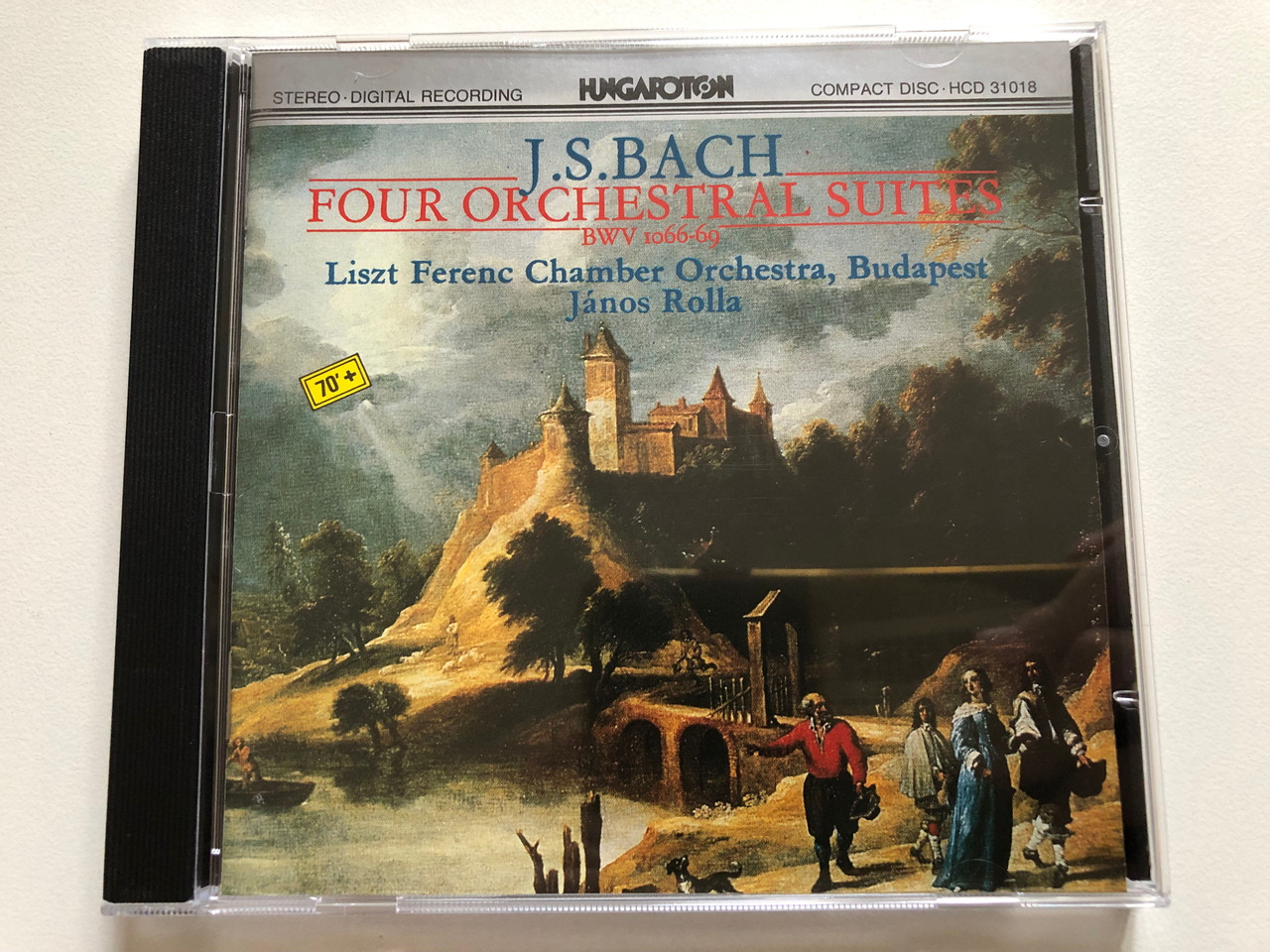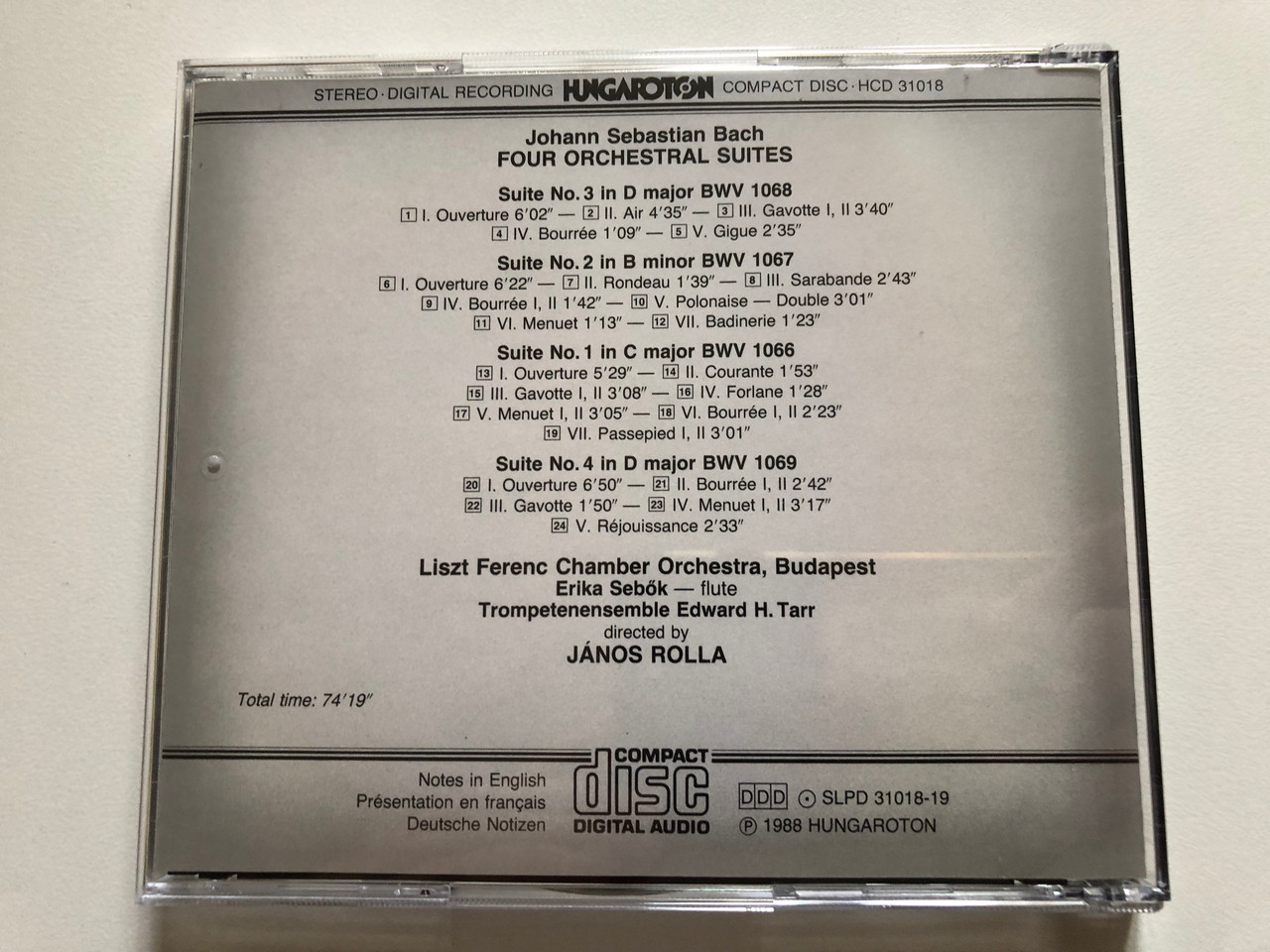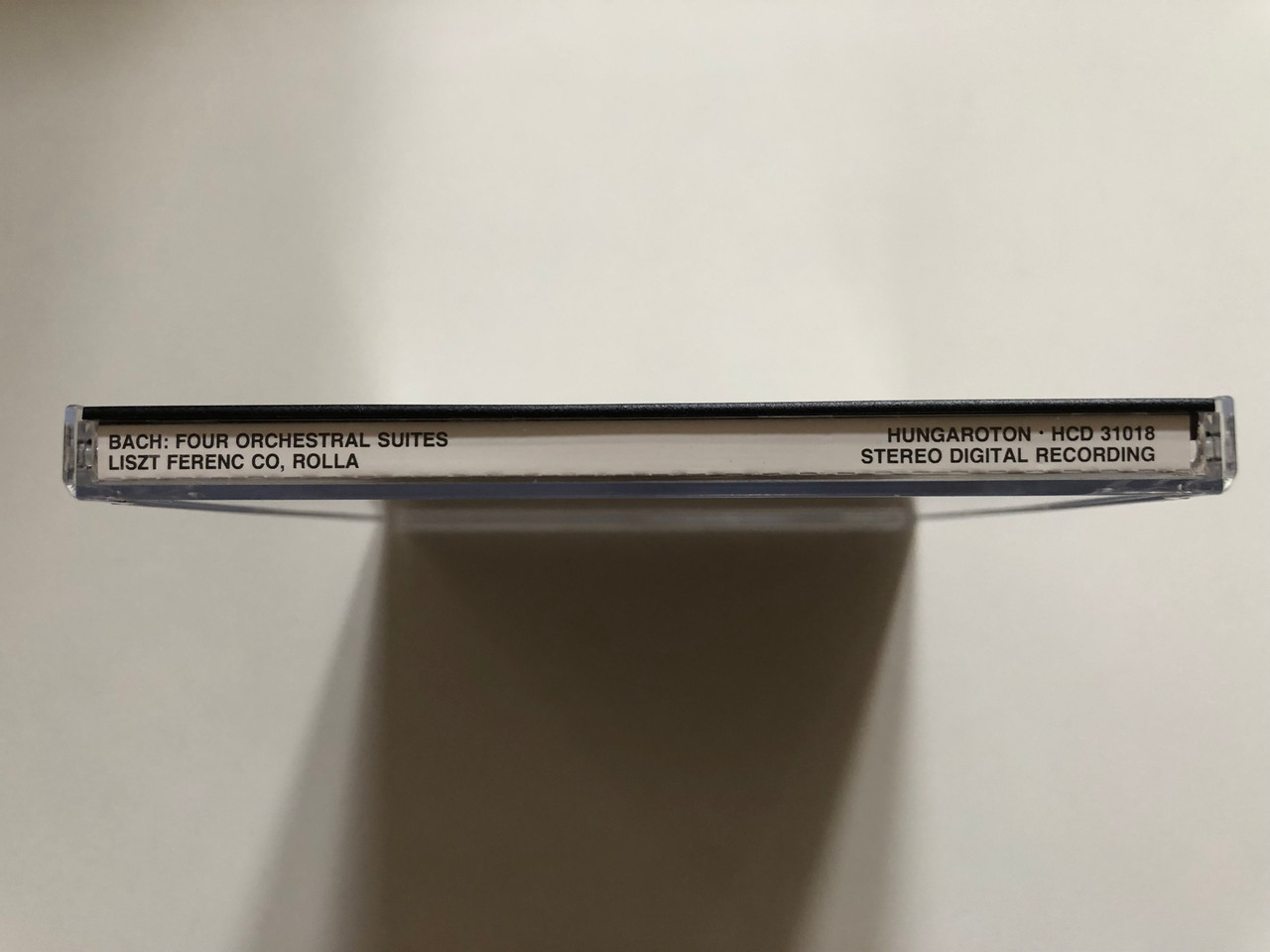J. S. Bach: Four Orchestral Suites BWV 1066-69 - Liszt Ferenc Chamber Orchestra,Budapest, János Rolla / Hungaroton Audio CD 1988 Stereo
HCD31018
ASIN B000050QJ1 UPC 5991813101822
The four orchestral suites BWV 1066–1069 (called ouvertures by their composer) are four suites by Johann Sebastian Bach from the years 1724–1731. The name ouverture refers only in part to the opening movement in the style of the French overture, in which a majestic opening section in relatively slow dotted-note rhythm in duple meter is followed by a fast fugal section, then rounded off with a short recapitulation of the opening music. More broadly, the term was used in Baroque Germany for a suite of dance-pieces in French Baroque style preceded by such an ouverture. This genre was extremely popular in Germany during Bach's day, and he showed far less interest in it than was usual: Robin Stowell writes that "Telemann's 135 surviving examples [represent] only a fraction of those he is known to have written"; Christoph Graupner left 85; and Johann Friedrich Fasch left almost 100. Bach did write several other ouverture (suites) for solo instruments, notably the Cello Suite no. 5, BWV 1011, which also exists in the autograph Lute Suite in G minor, BWV 995, the Keyboard Partita no. 4 in D, BWV 828, and the Overture in the French style, BWV 831 for keyboard. The two keyboard works are among the few Bach published, and he prepared the lute suite for a "Monsieur Schouster," presumably for a fee, so all three may attest to the form's popularity.
Scholars believe that Bach did not conceive of the four orchestral suites as a set (in the way he conceived of the Brandenburg Concertos), since the sources are various, as detailed below.
The Bach-Werke-Verzeichnis catalogue includes a fifth suite, BWV 1070 in G minor. However, this work is highly unlikely to have been composed by J. S. Bach.
Gustav Mahler arranged portions of BWV 1067 and 1068 for orchestra, harpsichord, and organ. They were played several times during Mahler's first tour of the New York Philharmonic, with Mahler on harpsichord and Harry Jepson on organ.
| Label: |
Hungaroton – HCD 31018 |
|---|
| Format: |
CD, Album
|
|---|
| Country: |
Hungary |
|---|
Released:
|
1988 |
|---|
| Genre: |
Classical |
|---|
| Style: |
Baroque |
|---|
Tracklist:
| |
|
Suite No. 3 In D Major BWV 1068
Ensemble [Additional] – Trompetenensemble Edward H. Tarr*
|
| 3 |
|
III. Gavotte I, II |
3:40 |
| |
| 5 |
|
V. Gigue |
2:35 |
| |
|
Suite No. 2 In B Minor BWV 1067
|
|
| |
| 10 |
|
V. Polonaise - Double |
3:01 |
| |
| 12 |
|
VII. Badinerie |
1:23 |
| |
|
Suite No. 1 In C Major BWV 1066
|
|
| |
| 18 |
|
VI. Bourrée I, II |
2:23 |
| |
| 19 |
|
VII. Passepied I, II |
3:01 |
| |
|
Suite No. 4 In D Major BWV 1069
Ensemble [Additional] – Trompetenensemble Edward H. Tarr
|
| 21 |
|
II. Bourrée I, II |
2:42 |
| |
- Bassoon – László Hara
- Cello – Mária Frank (tracks: 6 to 12)
- Composed By – Johann Sebastian Bach
- Design – István Práczky
- Directed By – János Rolla
- Double Bass – László Som (tracks: 6 to 12)
- Engineer – Ferenc Pécsi
- Flute – Erika Sebők (tracks: 6 to 12)
- Harpsichord – Zsuzsa Pertis (tracks: 6 to 12)
- Liner Notes [In Translations] – Judit Péteri
- Oboe – Gábor Dienes (tracks: 1 to 5, 13 to 24), József Kiss (tracks: 20 to 24), Péter Pongrácz (tracks: 1 to 5, 13 to 24)
- Orchestra – Liszt Ferenc Chamber Orchestra
- Producer – György Kádár
- Timpani – Mihály Kaszás (tracks: 1 to 5, 20 to 24)
- Trumpet – Bo Nilsson (tracks: 1 to 5, 20 to 24), Edward H. Tarr (tracks: 1 to 5, 20 to 24), Kjell-Åke Andersson (tracks: 1 to 5, 20 to 24)
- Violin – János Rolla (tracks: 1 to 5)





























